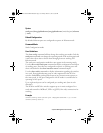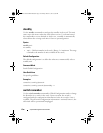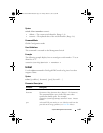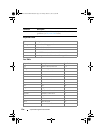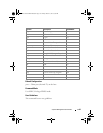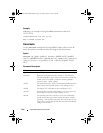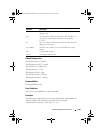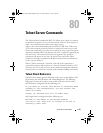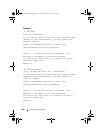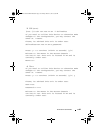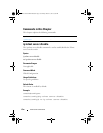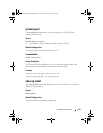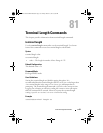
Telnet Server Commands 1747
80
Telnet Server Commands
The Telnet protocol (outlined in RFC 854) allows users (clients) to connect
to multiuser computers (servers) on the network. Telnet is often employed
when a user communicates with a remote login service.
Telnet is the terminal emulation protocol in the TCP/IP suite. Telnet uses
TCP as the transport protocol to initiate a connection between server and
client. After connecting, the telnet server and client enter a period of option
negotiation that determines the options each side is capable of supporting for
the connection. The connected systems can negotiate new options or
renegotiate old options at any time. In general, each end of the Telnet
connection attempts to implement all options that maximize performance
for the systems involved.
When a Telnet connection is initiated, each side of the connection is
assumed to originate and terminate at a Network Virtual Terminal, or NVT.
Therefore, the server and user hosts do not maintain information about the
characteristics of each other's terminals and terminal-handling conventions.
Telnet Client Behaviors
Different telnet clients operate differently with respect to the display of the
login banner, the MOTD banner and acknowledgements. The following
behaviors have been observed for some widely used telnet clients with a
MOTD banner configured with the following text:
If you need to utilize this device or otherwise make
changes to the configuration, you may contact the
owner at x38525.
Please, be advised this unit is under test.
and a login banner configured with the following text:
Welcome to the M6220 in the Bottom Chassis -
192.168.12.190. This unit is located in A2 and is
currently under test.
2CSPC4.X8100-SWUM102.book Page 1747 Friday, March 15, 2013 8:56 AM



